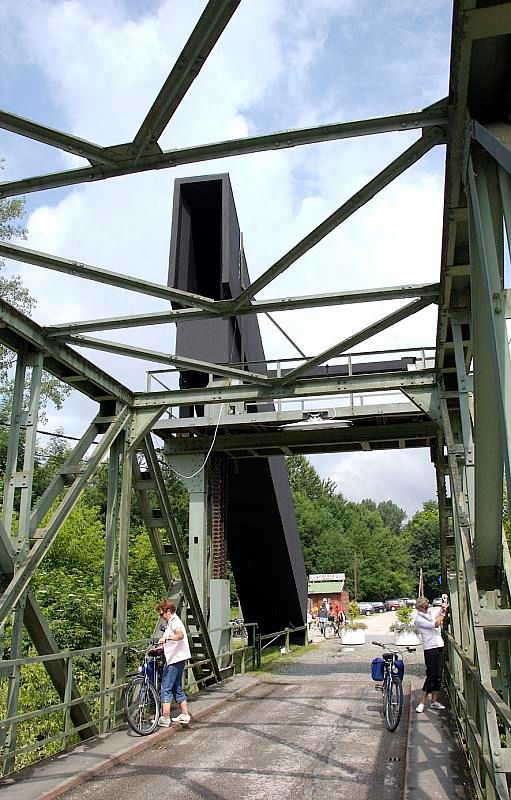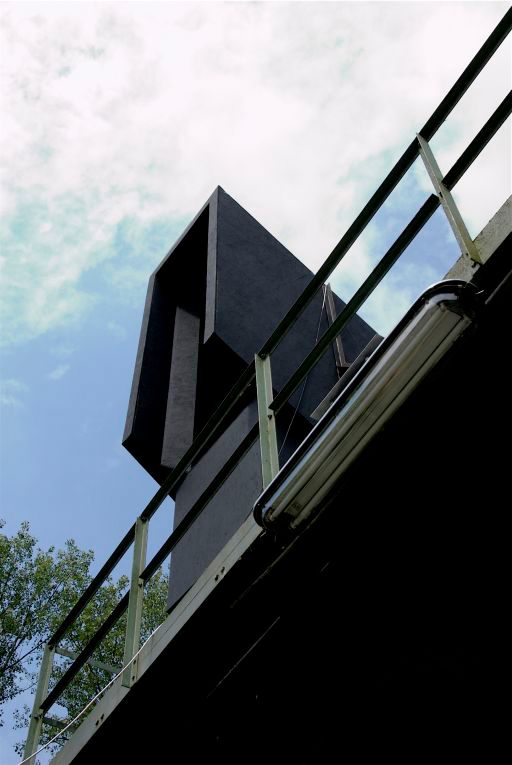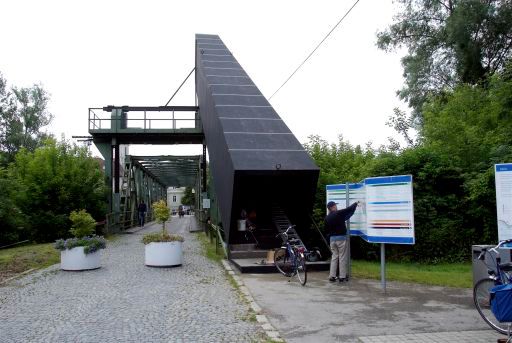Status Quo Vadis
BackArtists
- With
Information
The temporary project STATUS QUO VADIS was initiated in a cooperation between Kunst im öffentlichen Raum Niederösterreich and the Sommerspiele Melk summer festival to mark the 50th season of the latter, which was established in 1961.
The six projects of STATUS QUO VADIS undertook a scene change, beginning on the interface of social diagnoses between aesthetic and political processes and the process of presentation, as well as performative processes. Passers-by, tourists and theatregoers were able to participate in the production of counter-narratives for familiar events. The project spread throughout the town as a reappraised mapping of experiential spaces in the permeation of chorographies from the Danube over Leopoldsbrücke and Rathausplatz to the Bettlerstiege at Melk Abbey. These choreographies were developed in the mutual dramatological impact between individual projects and the situation on location. The intention was to draw a new map of Melk, as an expedition into new territories for art — free from utopianism and monument-based thinking. Today, public art plays its hand not only as a corrective for communication and participation to measure socio-political cultural spaces, but creates space for the intensification of reality production. Of course, a targeted expansion of the radius of activity is as much in play as the completion of progressive interdisciplinary projects ranging from sculpture and interventions to sound and light installations. We are the viewers, the audience, the listeners. We are artists, critics, curators, or know people who are. We normally meet at exhibitions, at openings or in public talks. We speak, we act. At the same time the roles ascribed to us find themselves continually interacting, they do not just engage with one focus but allow us to pose the question of the potential of our commitment afresh again and again. We are here — now. We share this public space, this entertainment, seeing, hearing and experiencing the work. The artists participating in STATUS QUO VADIS accentuate this relationship. They approach different positions simultaneously integrating the audience's varying perspectives. How does an exhibition become an arena for the forming of opinions? Through participation the public has the potential to be co-producers of public art. The re-territorialisation of cultural phenomena was already a source of perplexity for Henri Lefebvre, the father of the current debate on urbanism. He argued for an intensive exchange between the spheres of physical and mental space on the basis of social practise. (Ursula Maria Probst)
Contributors
- Kuration
Contributions
Anna C.E.E.H., Michael Salvi
"Melktribüne"
The artist Anna Ceeh and the architect Michael Salvi built a grandstand-like construction linking the St. Leopoldsbrücke and Hubbrücke bridges in Melk that could be accessed as an 18 metre long, perpendicular, conical sound tunnel running upwards. The installation was inspired by the beginnings of Russian constructivism and its urge to participate in politically shaping society. In the realisation by the duo The Melk Grandstand (Stairway to the Skies) is both an accumulating tool and one that extends the space, situated directly opposite Melk Abbey — it is conceived as its interventionist counterpart. At the same time the construction alludes to the terms 'resistance' and 'revolt', deliberately articulating political and anarchist positions numbering among the cornerstones of Schiller's drama William Tell, which was staged at the Donauarena directly next to the bridge during the Melk summer festival. The actual function of the Melk Grandstand could be experienced due to the decision in favour of performative action. As an 18 metre long tunnel-like black soundbox tapering upwards it could only be accessed by a single person at any one time, or on the way upwards towards the ramp's opening lying on Hubbrücke. Here, the Melk Grandstand was designed as a viewing platform equipped with electronic music, and could be used as a dancefloor. The songs were selected at random, and included tracks by Love-Fine, Randy Barracuda, PTU, Benzo, Pomassl and Park Modern. In its appropriation of conceptual structural mechanisms the work played on the way that socio-political approaches are reflected in art, progressive electronic music and architecture, or anticipated by these.
Female Obsession
"Live Sets"
In the installation „Live Sets“ Female Obsession permeated the urban space with lines of text installed on shop windows: "NO SOUL FOR SALE or DO IT AGAIN AGAIN AGAIN or A WEAPON OF CHOICE", "DANCE IN MY EXPERIENCE", "DO IT AGAIN", "FUTURITY NOW", "NO CON CEPTUAL PARADISE", "MIT HAUT UND HAAR" (with skin and hair), "CATCH ME IF YOU CAN", "IDOLS OF THE MARKET", "ENTERTAINMENT VALUES", "IST GELASSENHEIT EIN ORT" (is calmness a place?). The current understanding of style values, an insistent directness and a sceptical engagement with the sublime in the employment of language in public space encounter one another in an aggressive treatment of aesthetic media and materials as well as staged moments in the screen-like installations. Taking art as an "interventionist practise" that radiates on a mesh of interrelationships, Female Obsession addresses those phenomena where artistic processes transform into proactive options. In the functionally thoroughly organised system of signs of urban cultural life geared for tourism, the intervention by Female Obsession provided impetus for issues relating to political identity. How do we present ourselves in public space?
Eva Grubinger, Werner Feiersinger
„Two Friends“
Two black inflatable dinghies on which a highly polished stainless steel beam lies connecting the two: Eva Grubinger & Werner Feiersinger conceived an object as a symbol in their collaborative project Two Friends. The boats form a base for the minimalist object but they also have their own history. These boats, the appearance of which suggests that they do have a past — they were used by the Swiss army — is what the work is about, but it is also about the relationship to the beam lying on them. The different materials and surfaces generate a certain tension, moments of irritation and displacement. The work on the river can be read equally as a metaphorical and as a poetic gesture while demonstrating its own temporary character. The specific location and the town's own special position on the Danube are also addressed: a European river that has always served as a key transport route for people and goods. In the installation “Two Friends” by Eva Grubinger & Werner Feiersinger this aspect is also engaged with, although it is a voyage without a destination or purpose. The stainless steel beam is a kind of "reciprocal Readymade": not a solid, industrially produced I-beam, but a hand-made and hand-polished object. The current determines which way the rubber dinghies face as they are attached by long chains to lumps of concrete placed on the riverbed.
Martin Wagner, Viktoria Tremmel
„Sich ein Stück herausnehmen“
The artists Viktoria Tremmel and Martin Wagner engage with the symbolism of power and powerlessness in their installation in public space, and attempt, with an intervention, to demonstrate the broad spectrum of the topic at a location that has always been considered a threshold. The location is the first doorway on the Bettlerstiege, which was viewed historically as a connecting element between the abbey and the local population. In this sense, the two artists reference the place itself and its history. The title describes the crossing of a border as well as being conceived as both an instruction and an invitation: the visitors are invited to take a piece, to participate and so to alter the installation. Thirty of the T-shirts were red and bore the words (in German) "the boundary of your naked body penetrates the threshold of its own power", while the words covering another thirty lilac T-shirts translate as saying "slipping under the skin, what remains is the power, which is spreading, to find a language". The use of a total of 600 T-shirts resulted in a sculptural textile volume as a support for text, and consisting of many separate elements. Everybody was invited to take a T-shirt for themselves, to slip into it and so to expand the radius of the performance. In this way Viktoria Tremmel and Martin Wagner created a happening consisting of statements and counter-statements. Imagination and certainties in a critical reception impact on one another here that permeate both the aesthetic and the linguistic realms.
Rita Vitorelli, Dan Solbach
„Contained Poetry“
The installation „Contained Poetry“ on Rathausplatz engages with stories in general. There are "announcements" — posters, a collaborative work by Rita Vitorelli and the Swiss graphic designer Dan Solbach, whose point of departure was everyday graphic design: actions like the redesign of the flags, which makes one think of a 'history', an action, a performance; a vase in a shop window with neither a description nor a price tag, about which one can invent a story, or ask what is it about such enchanted objects in a souvenir shop. The title, Contained Poetry, is intended to trigger a change in the process of perception or envisioning the whole square. It plays with the word 'contain' to the extent that all things have a presence that alludes to a past or a future and so are not entirely in the present. The poetry is in the working with imagination and the ascription of a poetry to the square that it did not originally possess. The issue is not that one translates works into 'meaning' (e.g., a flag relieved of any symbolic function is intended as political criticism), but that one can think up concrete stories to keep the context of the meaning liquid. The interest here is less in the object-like in itself but more in the gestures and associations that can be catalysts for contents. The issue is also to think outside the box about public art.
Dorota Walentynowicz, Herwig Weiser
“Vanishing Point"
“Vanishing Point (erasure script)” is an intervention by Dorota Walentynowicz & Herwig Weiser in public space and the illumination of this space by street lamps. The standard bulbs in the lamps were replaced with intensely bright LED bulbs that moved rapidly between the two ends of the 15 lamps installed on Rollfährestrasse in Melk. The installation can be perceived as Land Art, as a line of light that cuts through the embankment landscape between Melk and the Danube. At the same time this intervention focuses on the perception of movement in its absolute form, an allusion to the filmic experience. Throughout the Melk summer festival this light performance could be experienced live between 9pm and midnight. A further effect of this artistic intervention was its impact as a moving flash, the repetitive action of which generated a rhythm and intervals in loop-like rapid succession. The result contrasted with the familiar perception of time. It is this position outside the relationship to relativity that emphasised the direction of the work, which was towards the creation of an absolute movement. It was a movement removed from causality, an absolute movement, a movement that exceeds the imagination, orientated on the perception of relative movements, as formulated by Gilles Deleuze in Vide: Cinema 1.



